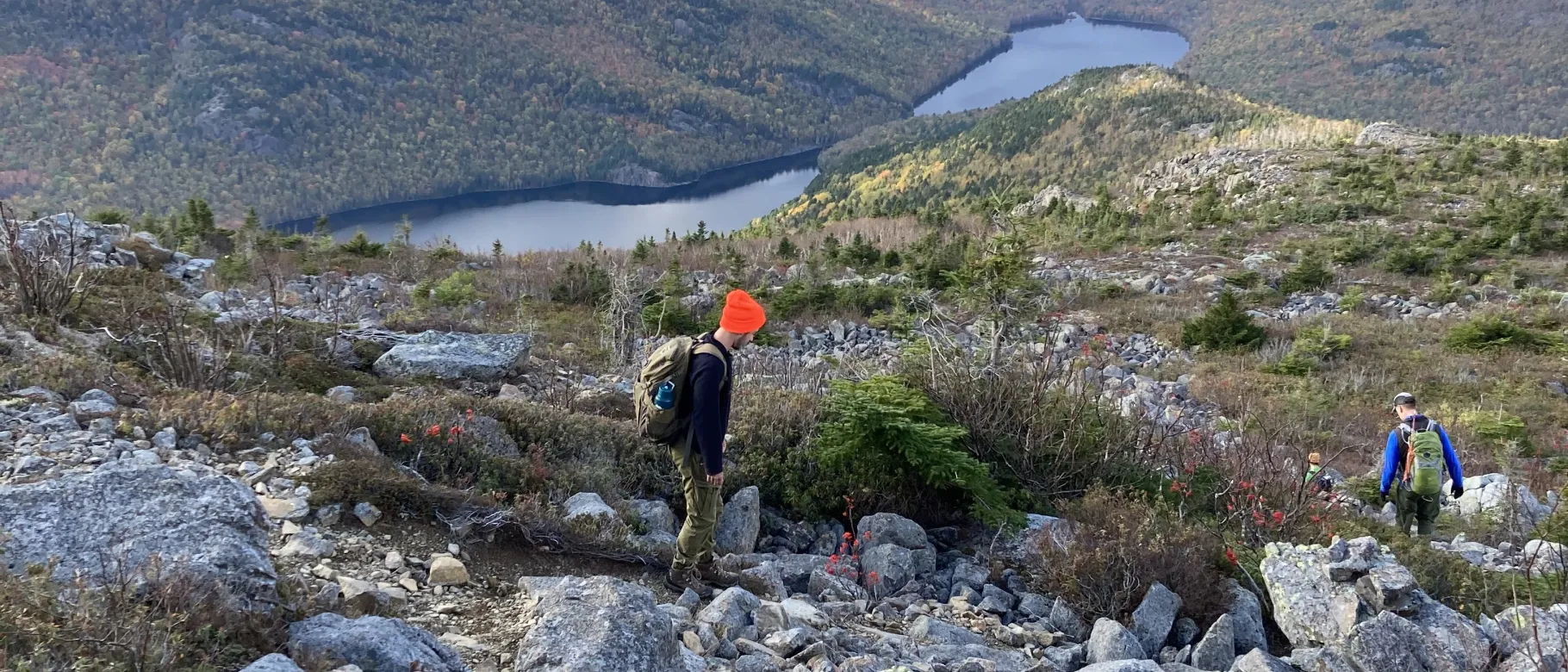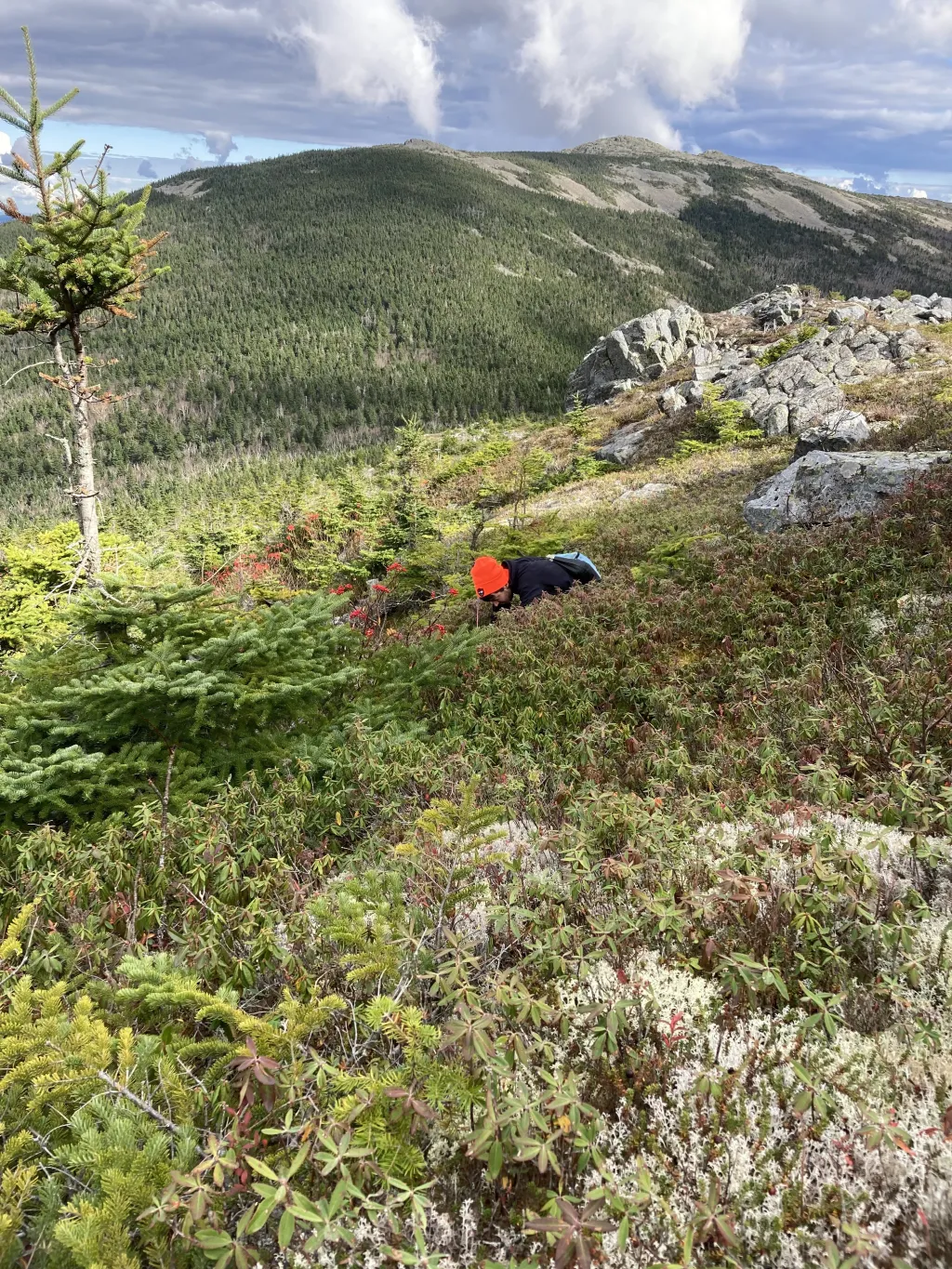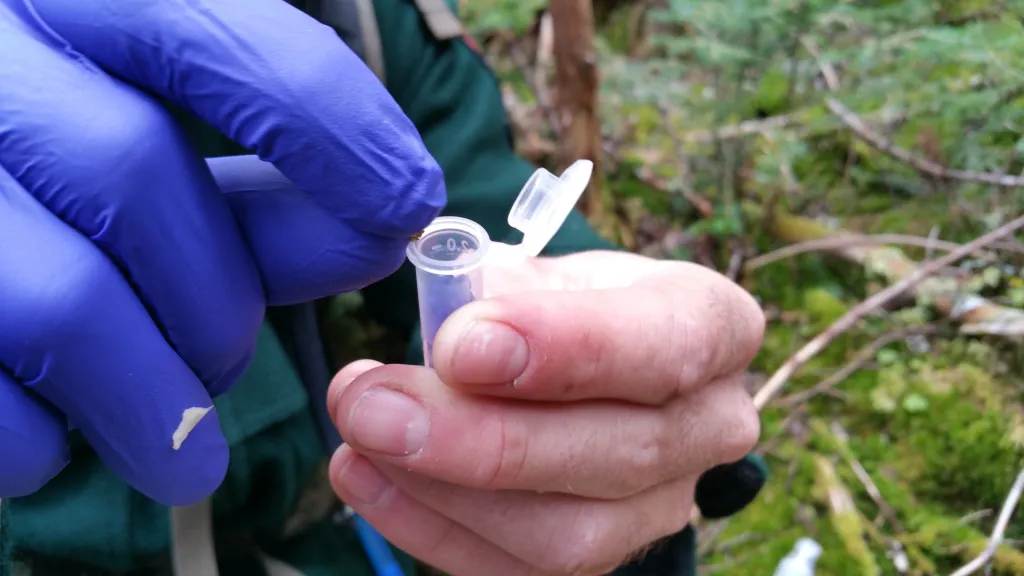UNE receives grant to research state-threatened animal

The University of New England has received a grant from the Maine Department of Inland Fisheries and Wildlife to study one of the most elusive creatures in the state — the northern bog lemming.
Zach Olson, Ph.D., associate professor of animal behavior in the UNE School of Social and Behavioral Sciences, is the principal investigator for the two-year project. Its specific goal is to identify the location and habitat associations of the small, burrowing rodent across Maine — a question that wildlife scientists have been asking about the wetland creature since it was added to the state’s threatened species list in 1986.
“The northern bog lemming is an important part of the Maine ecosystem,” said Olson, who has been researching the animal for over a decade. “This new grant will allow us to get a more accurate understanding of where to find the northern bog lemming and help us to better understand how they use the landscape, what they eat, and how many are there.”
The northern bog lemming is recognized as the highest priority tier of Species of Greatest Conservation Need in Maine and New Hampshire. It is also found in Canada, Alaska, and northern portions of Idaho, Montana, and Washington. The species, characterized by its dense fur and short tail, is typically located in wetland habitats such as marshes and its namesake, bogs.
Cory Stearns, a small mammal biologist for the MDIFW, said partnering with UNE on this research will also inform the animals’ status in the state and the agency’s conservation efforts.
“Not only are the northern bog lemmings a state-threatened species, but they have also only been documented at a half dozen or so sites in Maine,” he said. “We’re glad to work with UNE and Dr. Olson because he is one of the leading experts on northern bog lemmings and, in what limited research that’s been done in Maine, he’s been the lead on it.”
Traditional methods of tracking wildlife, such as trapping and surveying, have been ineffective in determining the location and number of northern bog lemmings across the northern United States, but Olson’s recent research has flipped the script in identifying this threatened animal.
Recent research conducted by Olson determined that genetic testing is an effective method for discovering the animals’ locations in different parts of Maine. The method involved collecting fecal pellets of small mammals, extracting DNA, and identifying whether northern bog lemming DNA was present in the sample.
“We’ve determined genetic testing works to identify the northern bog lemming. Now, we will work to figure out where northern bog lemmings exist in the state so that we can focus in on learning more about what drives northern bog lemming populations in general,” Olson said.
This past fall, Olson and a team of MDIFW field technicians collected samples from remote parts of the state. The samples were then processed in part by UNE animal behavior student Aliyah Walker-Pasko (’24).
Walker-Pasko said the opportunity to work on DNA extraction and polymerase chain reaction allowed her to become proficient, emphasizing the importance of understanding and gaining hands-on experience in the research process for the next steps in her career.
“This research connects students directly with people at Maine Fish and Wildlife,” she said, adding that building connections with the MDIFW as an undergraduate has been incredible. MDIFW has worked with Olson on creating the protocol for the survey efforts, developing the forms for data collection, and getting the technicians in place to do the fieldwork.
“Being able to research a threatened mammal is cool because there are a lot of extra guidelines and rules we have to consider,” Walker-Pasko said. “I also think it’s very important for people who want to go into conservation to understand biology research like this.”
Walker-Pasko and three other UNE students will spend the spring semester working on the samples in the lab. The students will also join Olson for the sample collection starting this spring.
“The northern bog lemmings are an important part of Maine,” Olson said. “I think we owe it to the state of Maine to learn as much about them as we can.”

